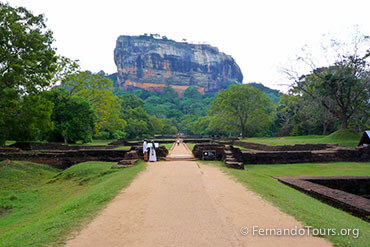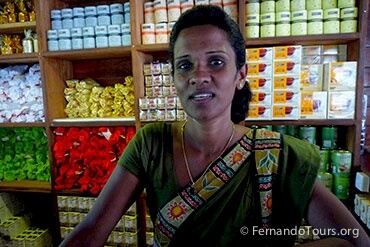
Sightseeing
Spice gardens in Sri Lanka are enchanting destinations that offer visitors a sensory journey through the diverse world of spices, herbs, and traditional Ayurvedic plants. Here are key aspects of spice gardens in Sri Lanka:
1. Biodiversity: Sri Lanka’s tropical climate and fertile soil create an ideal environment for a wide range of spices and herbs to thrive. Spice gardens showcase the rich biodiversity of the island, featuring plants like cinnamon, cardamom, clove, nutmeg, vanilla, and many others.
2. Guided Tours: Visitors to spice gardens can usually embark on guided tours led by knowledgeable experts. These tours provide insights into the cultivation, harvesting, and processing of various spices. Guides often share information about the medicinal properties and culinary uses of different plants.
3. Culinary and Medicinal Uses: Spice gardens offer demonstrations on how various spices are used in traditional Sri Lankan cuisine. Visitors can learn about the art of spice blending and taste dishes seasoned with an array of spices. Additionally, the gardens often emphasize the Ayurvedic properties of certain plants and their roles in traditional medicine.
4. Aromatic Gardens: Spice gardens are known for their aromatic ambiance. The air is filled with the delightful scents of spices and herbs, creating a pleasant and immersive experience for visitors.
5. Traditional Ayurvedic Practices: Many spice gardens in Sri Lanka incorporate elements of Ayurveda, the ancient holistic healing system. Visitors may encounter Ayurvedic practitioners who share information about medicinal plants and herbs used in traditional healing practices.
6. Botanical Education: Spice gardens serve as educational centers, promoting awareness about the importance of preserving plant diversity and traditional agricultural practices. Visitors can learn about sustainable farming methods and the significance of spices in Sri Lanka’s cultural heritage.
7. Souvenir Shops: Most spice gardens have souvenir shops where visitors can purchase a variety of fresh spices, essential oils, herbal teas, and other products. These items make for unique and aromatic mementos of the visit.
8. Scenic Surroundings: Spice gardens are often set in lush, picturesque landscapes. The greenery and vibrant colors of the spice plants create a visually appealing backdrop for visitors.
Visiting a spice garden in Sri Lanka provides not only a sensory delight but also a deeper understanding of the cultural and historical importance of spices in the country. It’s an opportunity to appreciate the diverse flora of Sri Lanka and the integral role spices play in its culinary and healing traditions.

Sightseeing
The Royal Botanical Gardens in Peradeniya, located in Kandy, Sri Lanka, is renowned for its stunning collection of plants and trees. Here are some key points about the Peradeniya Royal Botanical Gardens:
1. Location: The gardens are situated about 5.5 kilometers west of Kandy, the second-largest city in Sri Lanka.
2. History: The botanical gardens date back to the 14th century when they were royal pleasure gardens for Kandyan kings. However, the present garden layout was established in 1821 by the British during the colonial period.
3. Size and Layout: The Peradeniya Botanical Gardens cover an extensive area of around 147 acres. The gardens are beautifully landscaped and showcase a wide variety of plants, trees, and flowers.
4. Plant Collection: The gardens boast a diverse collection of flora, including palm trees, orchids, medicinal plants, spices, and an extensive avenue of royal palms. Notable collections include the Giant Bamboo of Burma, Javan fig tree, Cannonball tree, and various species of palms.
5. Avenue of Royal Palms: One of the iconic features of the gardens is the long avenue of royal palms. This majestic row of palms lines the main path and creates a stunning visual experience for visitors.
6. Peradeniya Botanical Gardens Orchid House: The gardens are also famous for their orchid collection. The Orchid House showcases a wide variety of orchids, including many indigenous species. It is a treat for orchid enthusiasts and those interested in tropical flora.
7. Great Circle: The Great Circle is a large circular lawn surrounded by palm trees. It provides a picturesque setting and is often used for recreational activities and events.
8. Botanical Museum: The gardens house a botanical museum that provides information about the history and development of the gardens, as well as exhibits on plant taxonomy and evolution.
9. Visitor Facilities: The gardens offer facilities such as guided tours, a souvenir shop, and a restaurant. Visitors can explore the gardens at their own pace or take guided tours to learn more about the various plant species.
10. Breathtaking Scenery: Apart from the diverse plant life, the gardens are also known for their scenic beauty. The Mahaweli River runs alongside, adding to the overall charm of the location.
The Peradeniya Royal Botanical Gardens is not only a haven for nature lovers and botanists but also a popular destination for tourists seeking a peaceful and visually captivating experience.
Please note, there is an entrance fee to enter the garden.

Sightseeing
Sigiriya is a UNESCO World Heritage Site, and the 5th Century ‘Fortress in the Sky’,
which is perhaps the most fantastic single wonder of the Island.
It is also known as The Lion Rock because of the huge lion
that used to stand at the entrance to the Palace
on the summit of the 600 feet high rock.
On its summit are the foundations of the Royal Palace, water tanks
to supply water and all other buildings and at the edges the guardhouses.
On one of the stairways the only known ancient work of Sinhala
secular painting survived in the form of Frescoes of 21 life sized damsels
still shining in their original colors.
The Water Gardens, Fountain Garden, Summerhouses,
Boulder Gardens and the Caves within the enclosed area should not be missed.

Sightseeing
Sri Lanka being famous for its ‘Ceylon Tea’ has added cheers to many the world for more than a century.
When visiting a tea factory, we will see how traditional Ceylon tea is being processed.
In the tea room we will be served a cup of tea, and it will be possible to purchase the various types of tea produced by the tea factory.
Entrance and guided tour in the tea factory is free of charge.



